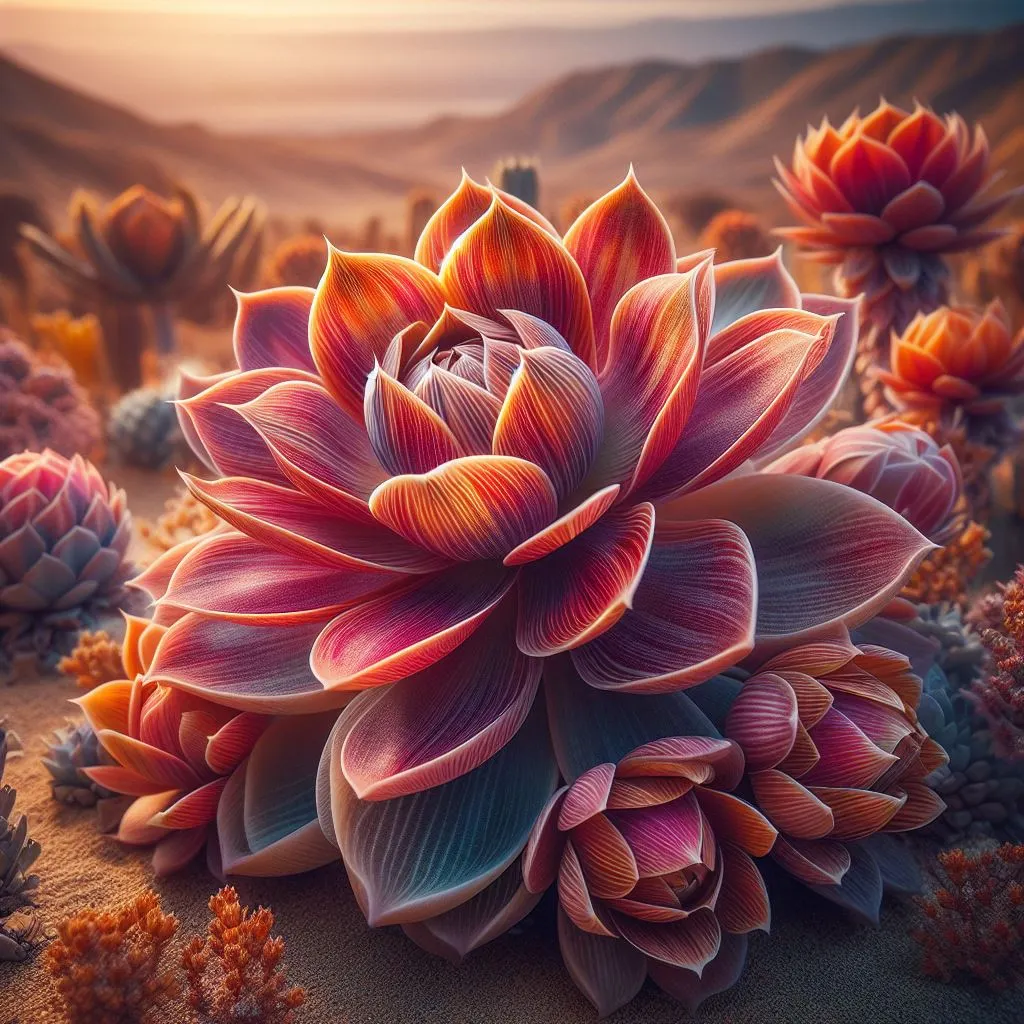The Beauty of Desert Succulent Flowers
What are Desert Succulent Flowers?
Desert succulent flowers are special plants that have adapted to survive in dry, arid environments where water is scarce. Succulents are known for their ability to store water in their leaves, stems, or roots, allowing them to thrive in conditions that would be challenging for many other plants. Let’s explore more about these fascinating plants and their unique characteristics.

Succulents can be found in various parts of the world, but they are especially abundant in desert regions like the southwestern United States, Mexico, and parts of Africa. These plants have evolved over time to develop features that help them conserve water and withstand extreme temperatures.
Types of Desert Succulent Flowers
- Cacti: Perhaps the most well-known type of succulent, cacti are iconic desert plants with their distinctive spines and unique shapes. They are masters of water conservation, storing water in their thick, fleshy stems. Cacti come in a wide range of sizes, from tiny miniature species to towering giants like the saguaro cactus.
- Aloe Vera: Aloe vera is a popular succulent known for its medicinal properties. It has long, spiky leaves arranged in a rosette pattern. The gel-like substance found inside the leaves is rich in nutrients and has soothing properties, making aloe vera gel a common ingredient in skincare products.
- Echeveria: Echeverias are prized for their rosette-shaped leaves and striking colors. These succulents come in various shades of green, blue, purple, and even pink. They store water in their plump leaves, which give them a chubby, almost playful appearance.
Adaptations to Survive
Desert succulent flowers have several key adaptations that enable them to thrive in harsh desert environments:
- Water Storage: Succulents have specialized tissues that can hold large amounts of water. This adaptation allows them to survive long periods of drought without wilting.
- Reduced Leaf Surface: Many succulents have thick, fleshy leaves or stems with reduced surface area. This helps minimize water loss through evaporation, conserving precious moisture.
- CAM Photosynthesis: Some succulents, including many cacti, use a specialized form of photosynthesis called Crassulacean Acid Metabolism (CAM). This process allows them to open their stomata (tiny pores on leaves) at night to minimize water loss during the day.
Colorful Beauty
Despite their challenging habitats, desert succulent flowers display a remarkable array of colors and forms:
- Flower Colors: Succulent flowers come in a wide range of colors, including vibrant reds, oranges, pinks, yellows, whites, and even purples. These colors attract pollinators like bees, butterflies, and hummingbirds.
- Shapes and Sizes: From delicate, star-shaped blooms to large, trumpet-like flowers, succulents exhibit a diverse range of shapes and sizes. Some species produce clusters of small flowers, while others boast showy, solitary blooms.
Caring for Succulent Plants
Growing desert succulent flowers at home can be a rewarding experience. Here are some essential care tips for healthy, thriving succulents:
- Well-Draining Soil: Use a well-draining potting mix specifically designed for succulents and cacti. This helps prevent waterlogged roots, which can lead to rot.
- Watering: Succulents prefer infrequent but deep watering. Allow the soil to dry out between waterings, especially during the dormant winter months.
- Sunlight: Most succulents love bright, indirect sunlight. Place them near a sunny window where they can receive several hours of sunlight each day. However, be cautious of intense, direct sunlight during hot summer afternoons, as this can cause sunburn.
Fun Facts about Desert Succulent Flowers
- Longevity: Many succulents are long-lived plants, with some species capable of surviving for decades or even centuries under the right conditions. Their slow growth and ability to withstand harsh environments contribute to their longevity.
- Diverse Uses: Beyond their ornamental beauty, succulents have practical uses. Some species, like aloe vera, have medicinal properties and are used in skincare products, herbal remedies, and dietary supplements.
- Global Appeal: Succulents have gained popularity worldwide due to their low maintenance requirements and unique aesthetics. They are favored by gardeners, interior decorators, and collectors alike.
Conclusion
Desert succulent flowers exemplify nature’s resilience and adaptability. These plants not only survive but thrive in some of the harshest environments on Earth, showcasing a remarkable array of colors, shapes, and survival strategies along the way. Whether you admire them in their native habitats or cultivate them in your home or garden, succulents inspire awe and appreciation for the beauty and diversity of the natural world. By understanding and caring for these remarkable plants, we can foster a deeper connection with nature and enrich our lives with their enduring charm and elegance.